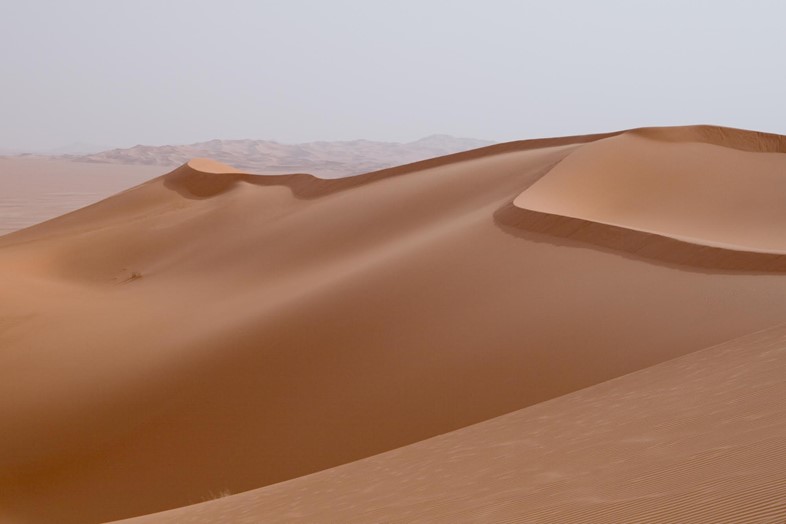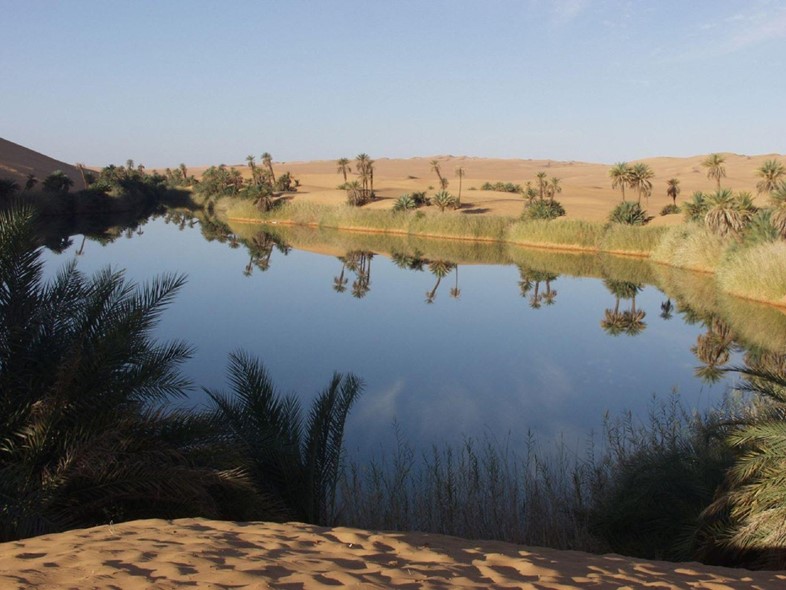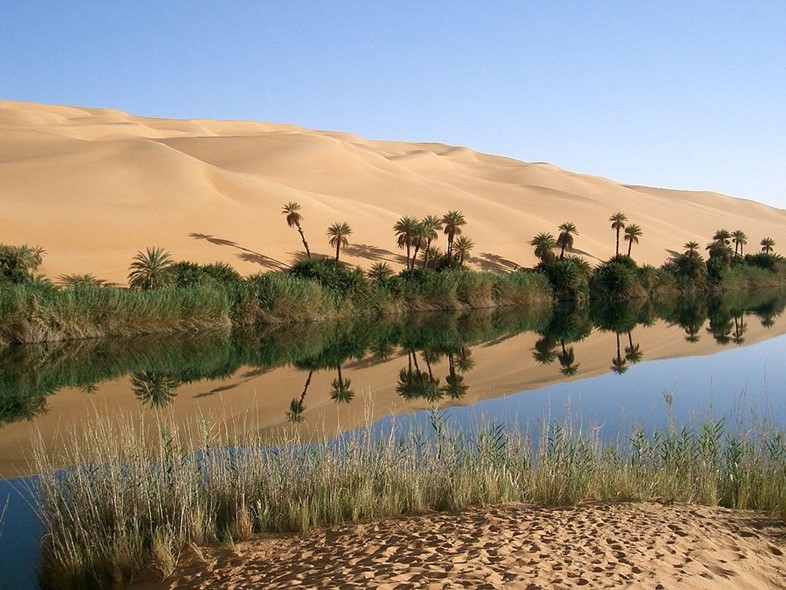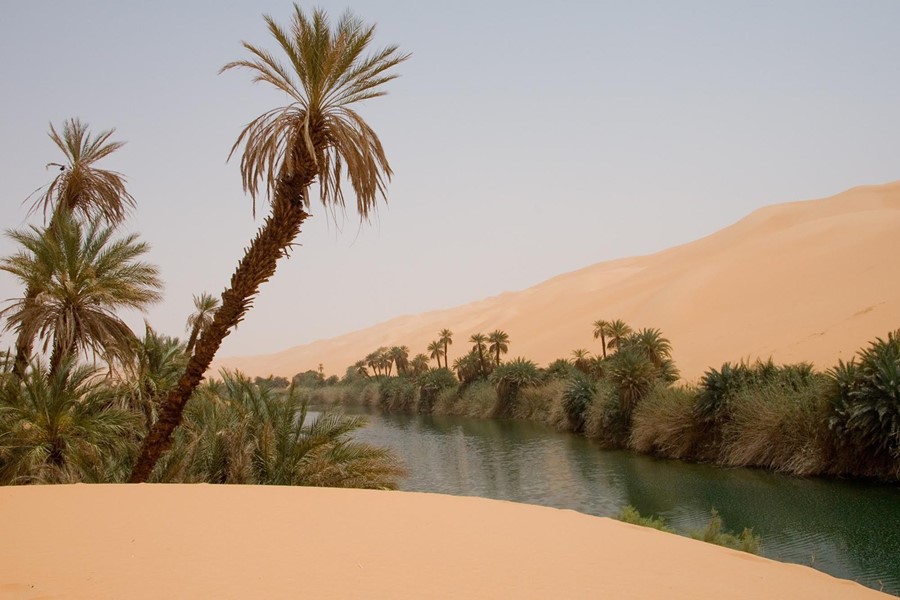super/collider goes in search of water in the Sahara Desert and uncovers a plan to create a vast inland sea
Where on Earth?
Ubari, Libya
GPS Coordinates: 26°35′N 12°46′E
Picture the vast Sahara Desert and one thing more than any other springs to mind: sand. Thousands and thousands of miles of sand… sand dunes, sand storms, sand people – and not a whole lot else. But parts of the Sahara are blessed with water: ancient cave art depicts swimmers and waves and, thanks to the geography of North Africa, huge areas could one day be transformed into shimmering seas.
Current oases in the desert include the spectacular lakes at Ubari in Libya, which lie in the Targa Valley in the country’s remote southwest. Fed by a spring, the fragile water supply supports the wetland grasses and iconic Saharan Date Palms that fringe the water’s edge, as well as a variety of bird and animal life. Set against the surrounding desert dunes and radiant blue sky, the fresh water and green leaves make a jaw-droppingly beautiful sight even in photographs – one can only imagine how surreal and welcome the view would be arriving on foot or by camel after weeks of desert travel.

What on Earth?
The Sahara spans a massive land area, and oases like Ubari offer hints at what parts of the desert might once have looked like – and could do again. Between about 15,000 and 5,000 years ago, much of Africa was wetter than it is today, lake and river levels were higher and water was plentiful across much of what is now desert. Pottery shards found across today’s ultra-arid regions show a common ‘wavy line’ motif indicating water, and in the Cave of Swimmers (made famous in The English Patient novel and film) ancient pictographs appear to show people swimming – though some scholars question this interpretation.
So could this relatively recent ‘Green Sahara’ bloom again? Humans have long dreamed of bringing water back to the desert, but for now the two main schemes remain just that – dreams. One plan, first conceived in the the 1870s, would see parts of North Africa flooded with water via channels cut from the Atlantic and Mediterranean. Because some of the Sahara sits below sea level, these canals would produce a constant flow of water into the desert, where it would evaporate.

The in-rushing water could generate electricity and large inland seas to provide a new habitat for flora, fauna and people – but they’d also grow increasingly saline over the years as the evaporating water left salt behind. There’s also the challenge and expense of building the long canals: a 1950s study on the possibility of using atomic bombs to excavate them concluded it would take 213 explosions – each 100 times more powerful than Hiroshima(!) – to do the job. A more recent (and thankfully less nuclear) idea would see the massive potential for solar power in the desert being used both to produce electricity and also convert saltwater into fresh water – creating a growing network of green oases as solar power plants spread across the sands.

How on Earth?
This may be a trip best saved for happier times. The British Foreign and Commonwealth Office currently advises against all travel to Libya “due to the ongoing fighting, threat of terrorist attacks and kidnap against foreigners, including from Daesh (formerly referred to as ISIL)-affiliated extremists, and a dangerous security situation throughout the country. British nationals still in Libya are strongly urged to leave immediately by commercial means.”
